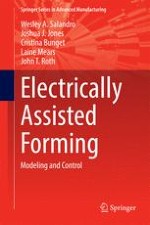2015 | OriginalPaper | Buchkapitel
9. Tribological and Contact Area Effects
verfasst von : Wesley A. Salandro, Joshua J. Jones, Cristina Bunget, Laine Mears, John T. Roth
Erschienen in: Electrically Assisted Forming
Aktivieren Sie unsere intelligente Suche, um passende Fachinhalte oder Patente zu finden.
Wählen Sie Textabschnitte aus um mit Künstlicher Intelligenz passenden Patente zu finden. powered by
Markieren Sie Textabschnitte, um KI-gestützt weitere passende Inhalte zu finden. powered by
